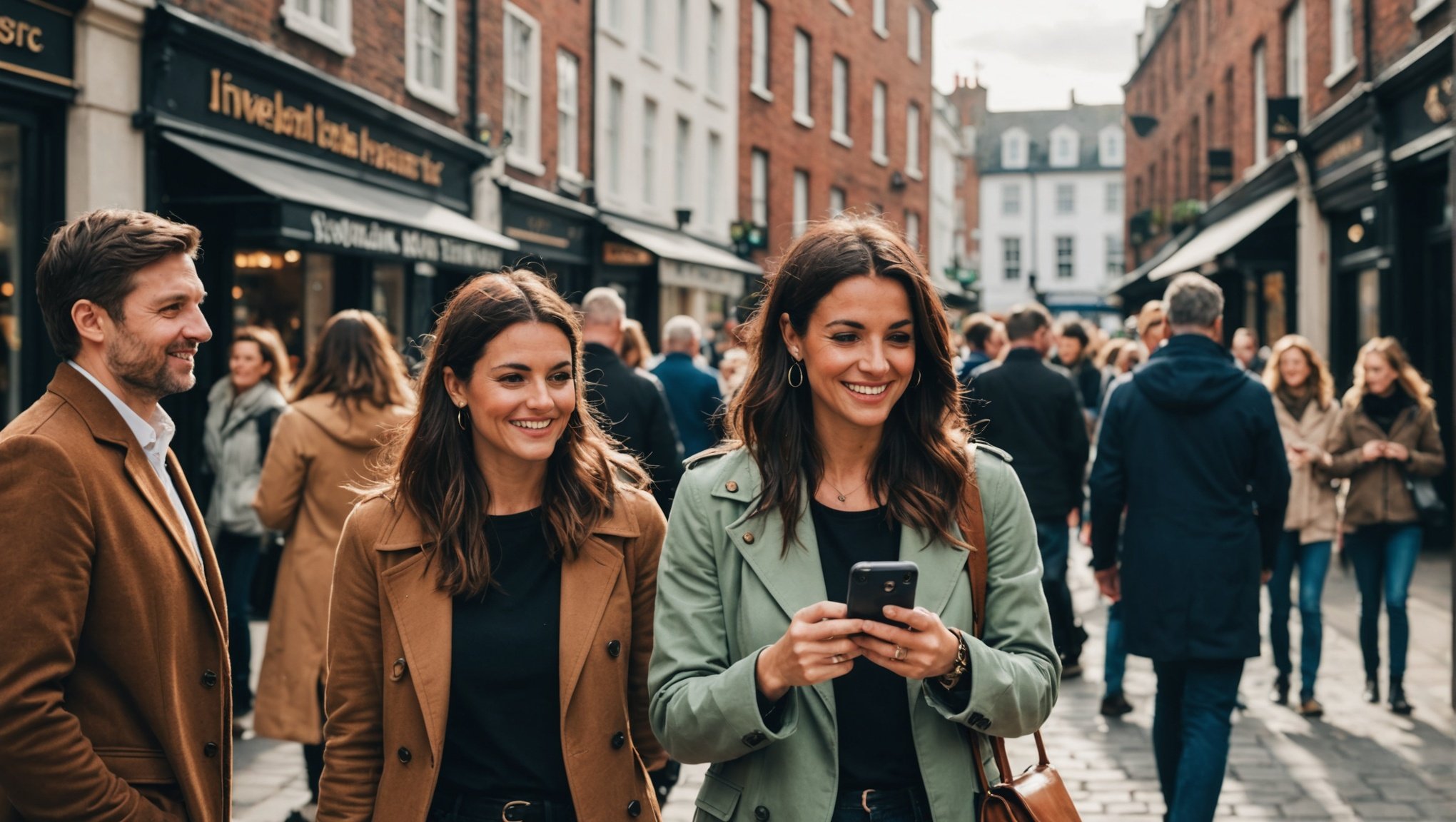Understanding Influencer Marketing in Tourism
Influencer marketing is revolutionising how UK tourism boards engage with potential travellers. By leveraging the power of social media influencers, these boards create compelling narratives that captivate audiences and promote destinations as must-see locales. Influencer marketing involves collaborations with well-known digital personalities who already have significant follower bases, thus ensuring effective audience engagement by reaching vast, diverse demographics.
The importance of targeting the right audience cannot be overstated in this sphere. Influencers often have tailored followings—some might appeal to thrill-seekers, while others cater to more relaxed, luxury-minded travellers. Thus, selecting influencers whose audiences align with the desired tourism sector ensures enhanced visitor attraction. This strategy not only drives interest but also fosters more authentic connections with potential tourists who are genuinely interested in what the destination offers.
Additional reading : Vallourec smart tubular solutions: shaping sustainable energy
Transforming traditional marketing strategies, influencer marketing introduces a dynamic edge to the tourism industry. Unlike conventional ads, which might feel impersonal, influencers offer personal insights and firsthand experiences, making promotions more relatable and credible. As UK tourism boards continue to adopt these strategies, influencer marketing proves to be an invaluable tool, aligning visitor’s expectations with what the destination can genuinely offer.
Identifying the Right Influencers
To establish effective influencer partnerships, especially in the tourism industry, it’s crucial to consider how well an influencer aligns with brand values. Start by evaluating their content and audience engagement to ensure they reflect your desired image. Selecting influencers who are genuinely passionate about travel can foster genuine connections with potential tourists.
Also read : Exploring the Future: Leveraging Virtual Reality for Destination Marketing by UK Tourism Boards
Niche targeting plays a significant role here. Instead of opting for celebrity influencers who might boast large followings but lack a focused audience, consider engaging with niche influencers. These are individuals with smaller, yet more engaged audiences who are interested in very specific themes, such as sustainable travel or historical tourism in the UK. By targeting niche markets, tourism brands can communicate more effectively with potential visitors who are truly interested in particular experiences.
Successful influencer partnerships in tourism often draw upon real-life case studies. For instance, collaborations with local UK-based influencers who showcase hidden gems can dramatically increase interest and visitor numbers to less-known destinations. Such partnerships highlight the potential of choosing influencers who resonate with niche markets. Leveraging the right influencers can turn niche interests into broader recognition, ultimately boosting tourism brand visibility and appeal.
Crafting Engaging Campaigns
Creating engaging content is essential for successful campaigns, particularly when collaborating with influencers. One effective technique is to co-create content with influencers that genuinely resonates with their audience. This can be achieved by combining your brand’s messaging with the influencer’s unique style and voice. Ensuring the content is authentic and relatable will enhance its engagement potential.
Consider the campaign strategies of VisitBritain, which successfully captivated tourists in the UK through comprehensive influencer collaboration. They worked closely with diverse influencers to showcase both popular attractions and hidden gems, creating fresh perspectives that appealed to a wide audience.
Balancing influencer creativity with brand messaging can be a complex task but is crucial for maintaining coherence. Develop clear guidelines that communicate your brand’s core message while allowing influencers the freedom to express their creativity. This partnership should feel like a natural extension of the influencer’s usual content rather than a forced advertisement.
By integrating these strategies, you can create campaigns that not only captivate the audience but also elevate your brand’s visibility and credibility. Remember, the key lies in finding the sweet spot where brand objectives and influencer authenticity meet.
Tools and Metrics for Efficiency
When diving into influencer marketing, efficient tracking of effectiveness is paramount. A wide array of marketing tools assists in evaluating the success of campaigns. These tools provide insights into key performance metrics, offering a comprehensive picture of how well your campaigns are doing. From Google Analytics to influencer-specific platforms like Hootsuite and Traackr, these solutions help correlate outreach efforts with actual performance.
A well-structured strategy begins with the importance of setting KPIs (Key Performance Indicators). Clearly defined KPIs such as reach, engagement rate, and ROI ensure laser-focused objectives. Measuring the campaign effectiveness against these KPIs allows marketers to gauge success and pinpoint areas needing enhancement.
The distinction lies in analyzing reach versus engagement. While reach provides visibility metrics, engagement offers insights into audience interaction and content allure. By contrasting these elements, marketers can refine their approach, leading to enriched storytelling and better-targeted sponsorships.
Techniques like audience segmentation and sentiment analysis offer deeper insights into performance. These strategies reveal not just how many people are viewing content, but who they are and how they feel. This understanding guides the adjustment of future campaigns for better outcomes.
Budgeting for Influencer Marketing
When planning an influencer marketing campaign in the tourism sector, budget allocation is central. Understanding your financial limits helps tailor campaigns that are both impactful and financially sensible.
Guidelines for Budget Allocation
Start by establishing clear objectives; knowing what you want to achieve will guide your budget decisions. Consider factors such as the size of your target audience and the platforms they’ll engage with. Allocate a portion of your budget to cover influencer fees, content creation, and any potential paid promotions.
Identifying Cost-effective Strategies
To maximize cost-efficiency, seek out influencers whose audiences align closely with your target market. Rather than focusing exclusively on high-profile personalities, consider smaller influencers who achieve high engagement ratios. Utilize negotiation to create mutually beneficial partnerships, enabling you to stretch resources more effectively.
Measuring ROI
Assessing Return on Investment (ROI) requires thorough tracking and analysis. Determine metrics that reflect your campaign’s success, such as increased bookings or enhanced brand awareness. Adjust your budget allocation regularly based on these insights to ensure optimal use of funds. By consistently refining your approach, you can adapt to changing market dynamics and improve future campaign performance.
Tailoring Strategies for the UK Market
Understanding UK tourism trends is crucial for crafting effective influencer marketing strategies. These trends often dictate which destinations are popular and the types of experiences tourists seek. By aligning campaigns with these trends, marketers can better engage their target audiences and drive meaningful interactions.
Cultural considerations play a vital role in this landscape. Embracing cultural sensitivity ensures that marketing campaigns resonate deeply with the local populace. For example, understanding British humour, historical context, or current local events can enrich the authenticity of promotional content and avoid potential missteps.
Local engagement, when done effectively, serves as a powerful tool in influencer campaigns. Influencers with strong ties to UK communities bring a layer of authenticity and relatability. Successful case studies include collaborations where influencers hosted virtual tours of heritage sites or shared iconic British experiences, like traditional afternoon tea rituals. These engagements not only captivate audiences but also foster a genuine connection with the culture.
- UK tourism trends: Understand and align with current travel interests.
- Cultural sensitivity: Embrace and integrate local insights.
- Local engagement: Leverage influencers with strong community ties.
By focusing on these strategies, brands can significantly enhance their presence and appeal within the UK market.











